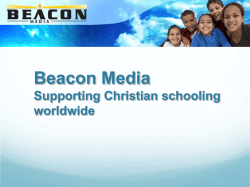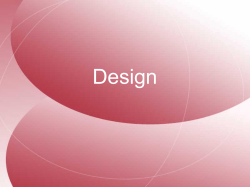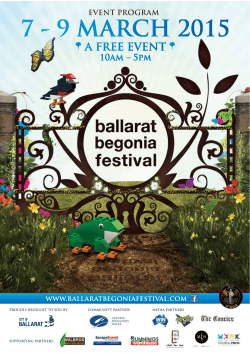
MARIE TAILLARD YUN MI ANTORINI
MARIE TAILLARD Associate Professor, Marketing, ESCP Europe Business School, London, UK YUN MI ANTORINI Community Strategist, LEGO Group, Denmark CREATIVITY IN THE LEGO ECOSYSTEM Creativity in the LEGO Ecosystem Marie Taillard and Yun Mi Antorini Creativity resides at the very core of the LEGO experience. It starts with the creativity of a single LEGO user playing with LEGO bricks to express a mood or an idea, and may serve to inspire others, driving more play, more creativity, and engage ment. Observers often point to the very active and valuable work of LEGO fans supported by employees and managers at LEGO Group, as an example of successful “co-creativity.” Through this well documented network of relationships, we see evidence of a veritable ecosystem composed of users, young and old; parents; educators; employees; retailers; licensing partners; journalists, and other observers, having developed around the LEGO experience. An ecosystem in business, just as in biology, functions as a self-reinforcing whole whose com ponents create value for each other through the relationships that hold them together. In the case of the LEGO ecosystem, it lives thanks to the work of its many members, and the strong brand it has forged, but its structure has remained implicit and undocumented as a whole. Our current research aims to address this gap. hold them together. We have recently embarked on a project to uncover the Ecosystem as a whole, the elements that constitute it and create value with and for each other, and the value it generates for the LEGO users and the company alike. In this project, one of our main objectives is to uncover and thoroughly document the role of creativity throughout the LEGO Ecosystem. It is our strong belief that the LEGO Group is a particularly convincing model of an organization in which creativity is at the very core of value creation. In this short essay, we will explain how we understand the notion of creativity in the context of the LEGO Ecosystem and how we see creativity unfolding through the rich activities of its stake holders coming together as an Ecosystem. Inside the LEGO Group, creativity drives product development, design, and production. It also feeds the marketing efforts that bring LEGO products to market, positioning them uniquely to engage the experience of users and others in the Ecosystem. Our current examination of the value creation processes within the Ecosystem highlights the role of interactions between different types of stakeholders as important drivers of crea tivity. We see this, for instance, very clearly in the variety of online and offline exchanges between AFOLs (Adult Fans of LEGO) who share their passion for their hobby, facilitate the acquisition of hard-to-find LEGO elements, promote their events and platforms, and support each other both in their practices and in important life moments. Likewise, the inter actions between AFOLs and the LEGO Group are conducive to creativity, for instance when new designs are selected on the Ecosystems must constantly adapt to the broader environ ments in which they exist. In the business world, this requires staying ahead of competition, sociological changes, economic pressures, regulations, and other external factors. To remain sustainable, the LEGO Ecosystem must be carefully nurtured – valuable components, relationships, and interactions must be preserved and renewed, and allowed to evolve with time. This requires an excellent understanding of the Ecosystem as a whole, of its components, and of the relationships that Cultures of Creativities 64 LEGO Cuusoo platform, when an AFOL’s LEGO model is shared on the ReBrick site, and when LEGO elements are inventoried on Brickset. Some of this creative work has been clearly documented and analyzed in a longitudinal study of the LEGO Group’s inter actions with user communities (Antorini & Muñiz, 2013; Antorini, Muñiz & Askildsen, 2012). mechanisms of audiences and creators expressing and inter preting ideas, information, knowledge, practices via material and socio-cultural affordances, resulting in the creation of new artifacts (Glaveanu, 2010). As such, creativity is a com plex process whose psychological, social and cultural dimen sions facilitate, feed and reinforce each other. This is clearly exemplified in the case of the LEGO Ecosystem. Users from diverse cultures access, adapt, and integrate each others’ skills, motivations, resources, practices, and interests to create new models, discover new ways to play and build, experiment with new elements, and inspire each other in their LEGO experience. These types of interactions constitute the “meso-level” of the ecosystem, the processes through which resources such as knowledge, skills, passion, emotion, financial and human resources, raw material, and such are shared by stakeholders. For instance, a young child playing with LEGO bricks for the first time observes his/her older brother build a funny car and then goes on to build his/her own creation; an AFOL reads about another fan’s model and offers supportive feedback; a LEGO Community Engagement & Events employee requests clarification from an AFOL Ambassador on how to best support fan organized events. As resources are shared – accessed, adapted, and integrated from one individual to another – creativity unfolds through the natural adaptive and iterative process of inte gration: the more sharing, the more adapting, the more inte grating, the more creativity (Taillard, Glaveanu & Voyer, 2013). Let’s exemplify the externalization and internalization process es inherent to creativity in greater detail. A young LEGO user owns an extensive collection of LEGO bricks which he extern alizes by sharing it with friends during a playdate. Together, the children imagine and build a new model out of the many sets laid out in the playroom. One of the children internalizes this new experience and learns how to mix different elements and sets together, reinterpreting new ways of playing and building along the way, and developing his/her own style as a user. This process, repeated and shared over time and across space, develops into more creativity at the same time as new practices and cultural artifacts take shape. This analysis points to the transition from the individual and psychological to the social and cultural. This shift is clearly discussed and illustrated in work by Schau, Muñiz and Arnould who point to the complex structure of cultural practices as value creating drivers (Schau, It is the amazing capacity of the human mind in its full social and cultural capacity that allows creativity to unfold in this rich context around the shared focus, interest or passion on LEGO products and the LEGO experience. According to the social psychologist, Vlad Glaveanu, creativity is a process that operates through the internalization and externalization Cultures of Creativities 65 Muniz & Arnould, 2009). Implicit in their proposed typology of practices are the micro-level externalization/internalization processes, such as the ones documented in the LEGO Eco system, that allow creativity to unfold and flourish one individual, one interaction, one idea at a time. The LEGO Ecosystem provides an excellent observation ground for the power of creativity in creating value for all stakeholders. The Ecosystem model itself allows a careful analysis of the role of different stakeholders and their relationships and interactions. By focusing on these different dimensions, we are working to document the specific points of creative resource exchange and to identify the features of those most likely to result in collective and cultural level creativity. In other words, we are identifying those types of exchanges, their participants, and the material affordances and contexts that enable them, that are most conducive to greater creativity over time. This in turn will allow a more careful nurturing and support of the platforms, channels, events, and other touch points throughout the Ecosystem in order to support and en courage the externalization and internalization processes that are so critical to collective creativity. However, make no mis take: ecosystems and the creativity they generate are never candidates for quick “in and out” interventions, but rather the result of painstaking and long-term work. In an article on collective consumer innovation, Kozinets, Hemetsberger and Schau point to the effect of time and commitment on the acti vities of community members in weaving a “complex social and cultural fabric” (Kozinets, Hemetsberger & Schau, 2008). Our goal in researching and analyzing the Ecosystem is to find ways to facilitate and nurture the weaving processes with great respect for their spontaneity and complexity and the pain staking work and efforts that they represent. REFERENCES Antorini, Y.M. & Muñiz, A.M. (2013), ‘The Benefits and Challenges of Collaborating with User Communities’, Research - Technology Management, vol. 56, no. 3, pp. 21-8. Antorini, Y.M., Muñiz, A.M. & Askildsen, T. (2012), ‘Collaborating With Customer Communities: Lessons From the Lego Group’, MIT Sloan Management Review (Spring). Glaveanu, V. (2010), ‘Creativity As Cultural Participation’, Journal for the Theory of Social Behaviour, vol. 41, no. 1, pp. 48-67. Kozinets, R.V., Hemetsberger, A. & Schau, H.J. (2008), ‘The Wisdom of Consumer Crowds: Collective Innovation in the Age of Networked Marketing’, Journal of Macromarketing, vol. 28, pp. 339-54. Schau, H., Muniz, A.M. & Arnould, E. (2009), ‘How Brand Community Practices Crea te Value’, Journal of Marketing, vol. 73 no. 5, pp. 30-51. Taillard, M., Glaveanu, V. & Voyer, B. (2013), ‘The Role of Consumer Creativity in the Value Creation Process: A Conceptual Framework’, Proceedings of the European Marketing Academy (EMAC). Cultures of Creativities 66
© Copyright 2025














